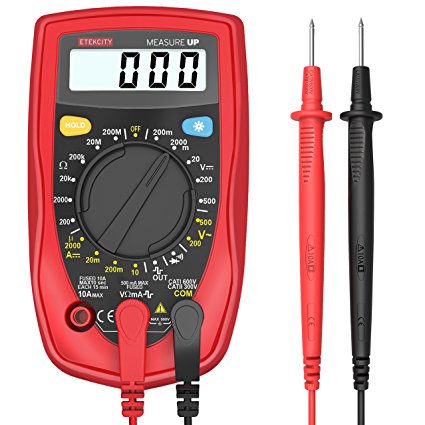Multimeters are important devices that are used by the electronic technicians to check the voltage, current and resistance of the electrical equipment during their repair or installation. These devices make the work of the technicians easy and hence their demand is increasing in the market. With the advanced features added in the multi-meters, now they can also calculate the duty cycle, capacity, decibel as well as other measurements. There are some that also come with built-in sensors and can measure the temperature and humidity level as well. The most common types of multimeters are as follows:
- Analog multimeter –Also known as VOA, the analogmultimeter is used for measuring the current, resistance and voltage. This traditional multimeter has a needle which points at the scale to tell the reading. Though they are a basic model, they are not considered as good for beginners as they are difficult to read.
- Digital multimeters – these are used for measuring capacitance, resistance, temperature, voltage etc. based on its features. The readings are displayed on the screen in the form of numbers which makes it easier to get the reading.
Some factors to make the purchase of VOA easy
Sensitivity – it is an essential specification to look for as the meter must be capable of withdrawing a certain current amount from the circuit so that the meter can deflect. The multimeter works as a resistor placed in between two points to be measured. The value in number is specified in terms of Ohms which is the effective resistance calculated within the given range.
Range–the VOA multimeters come in several ranges which are defined in terms of FSD, Full scale deflection. Best readings can be obtained if the scale ranges between a quarter to all the FSD. This allows optimum accuracy and the following ranges can be read.
- AC Voltage –1000V, 250V, 100V, 25V and 10V
- DC Voltage – 1000V, 250V, 100V, 25V, 10V and 2.5 V
- Resistance – 10 000R, 100R, R
- DC Current – 100mA, 10mW, 1mA, 50uA
Operation–the multimeter has a simple design but it can be confusing for the newbie to read it. Mostly, the analog ones are used by the experienced professionals. Some simple steps involved in the operation of these multimeters are as follows.
- Firstly you need to insert the probe in the right connections. This is essential as there might be different connections available for use.
- Select the range and measurement type to be done. Maximum range should be selected above the value that is anticipated. This range can be altered if necessary. It is suggested to keep the range high so that there is no damage caused to the meter.
- In order to gain accurate reading, maximum deflection is required which can be done by adjusting the reading.
- After taking the reading, as a precaution you should place probes back in voltage measurement sockets and then the range should be turned to maximum. This minimizes the damage which can be caused to the meter if accidentally the meter gets connected.

